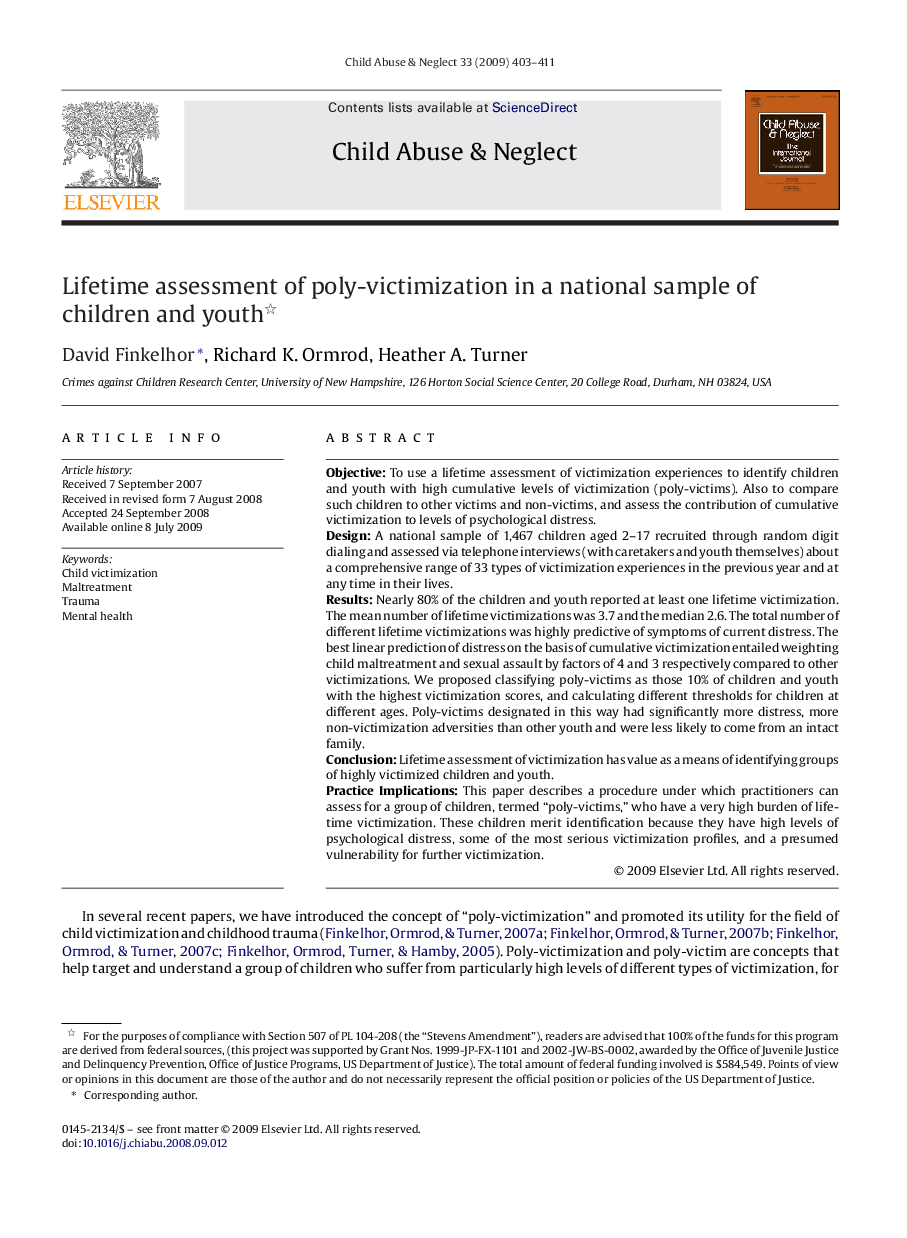| Article ID | Journal | Published Year | Pages | File Type |
|---|---|---|---|---|
| 345258 | Child Abuse & Neglect | 2009 | 9 Pages |
ObjectiveTo use a lifetime assessment of victimization experiences to identify children and youth with high cumulative levels of victimization (poly-victims). Also to compare such children to other victims and non-victims, and assess the contribution of cumulative victimization to levels of psychological distress.DesignA national sample of 1,467 children aged 2–17 recruited through random digit dialing and assessed via telephone interviews (with caretakers and youth themselves) about a comprehensive range of 33 types of victimization experiences in the previous year and at any time in their lives.ResultsNearly 80% of the children and youth reported at least one lifetime victimization. The mean number of lifetime victimizations was 3.7 and the median 2.6. The total number of different lifetime victimizations was highly predictive of symptoms of current distress. The best linear prediction of distress on the basis of cumulative victimization entailed weighting child maltreatment and sexual assault by factors of 4 and 3 respectively compared to other victimizations. We proposed classifying poly-victims as those 10% of children and youth with the highest victimization scores, and calculating different thresholds for children at different ages. Poly-victims designated in this way had significantly more distress, more non-victimization adversities than other youth and were less likely to come from an intact family.ConclusionLifetime assessment of victimization has value as a means of identifying groups of highly victimized children and youth.Practice ImplicationsThis paper describes a procedure under which practitioners can assess for a group of children, termed “poly-victims,” who have a very high burden of lifetime victimization. These children merit identification because they have high levels of psychological distress, some of the most serious victimization profiles, and a presumed vulnerability for further victimization.
